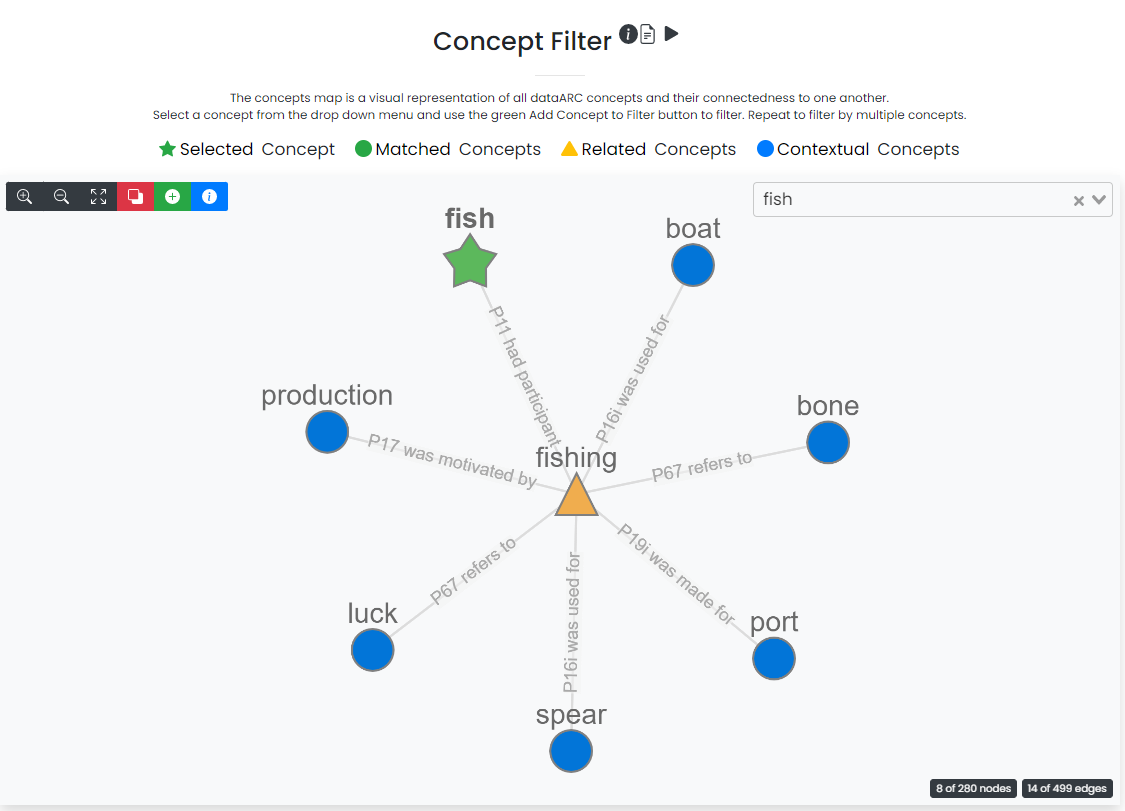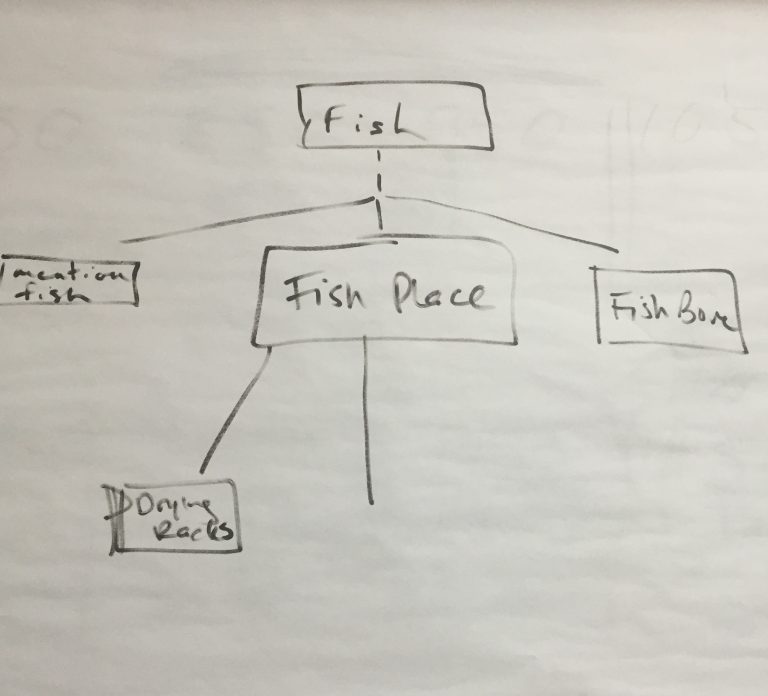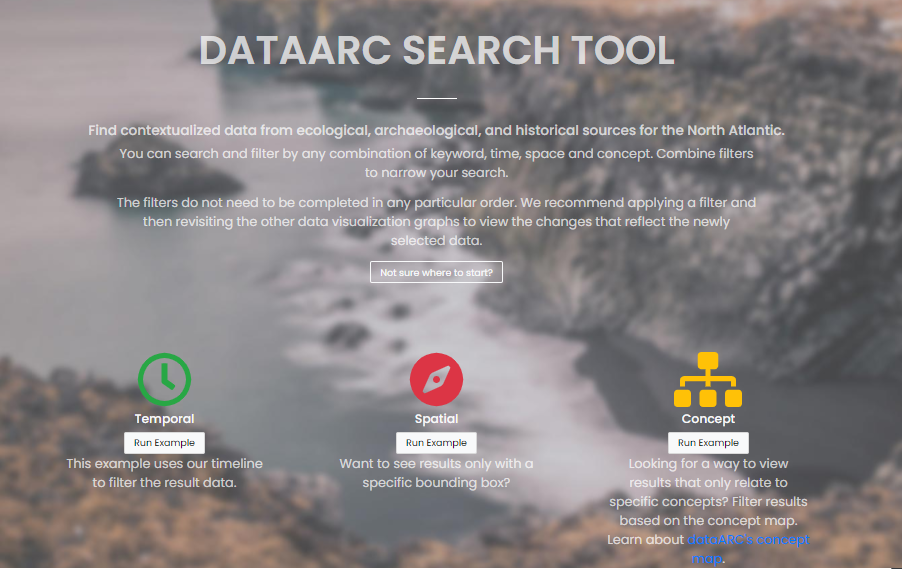Concepts in the dataARC Tool
DataArc’s central aim is to foster interdisciplinary and collaborative research on human-environment dynamics in the North Atlantic, and to do that we have had to develop a way to understand one anothers' work across disciplines. For example, two scholars could both study fish but the zooarchaeologist would be concerned with identifying types of fish and looking for indicators of human use of fish, while a saga specialist might be concerned with the ways fish are portrayed in literary traditions. The "concepts" within DataARC can be used by these researchers to better understand one another's approaches to and data on shared topics, and even to become aware of the research possibilities that may not have been imaginable from a single disciplinary perspective.


Defining a shared data model and conceptual framework to build links across these disciplines, to help researchers integrate their data and ideas, is an important part of developing dataARC’s digital research tools. This task requires that we think about the ideas and conventions implicit in how each researcher models their own data so that we can create a formal framework to clearly express the links between individual researchers’ shared ideas and questions. This formal framework is the dataARC concept map. The concept map is the product of much debate and discussion among the group and continued to evolve during the course of the project.
The implementation of existing conceptual models - like the CIDOC Conceptual Reference Model from the International Council of Museums -- have already shown research communities the promise of integrating data across disciplines, and our hope is to build a similar shared language among North Atlantic scholars. These concepts are organized and linked to one another to form an ontology, or a conceptual map.
To support compatibility and future integration with external projects, we have connected the dataARC concept map with the existing CIDOC Conceptual Reference Model, which has an active user community in archaeological, cultural heritage, and historical domains. We have also implemented limited mappings to ontologies like the Global Biodiversity Information Facility (GBIF), where these intersect with the scope of the project.

Each concept in our community-developed map is described in more detail in what we call "scope notes". These scope notes are authored and edited by multiple team members. The objective of a scope note is to bring together interdisciplinary perspectives on a single concept.
Our scope notes collection is a living document, hosted on github. Because ideas change and new voices enter our research community as it grows, we've chosen to take an open, discursive approach to writing the scope notes. Anyone interested in contributing a new scope note or suggesting revisions to scope notes can participate in the process.
You can view the current state of the scope notes and see their interconnections at our Scope Notes Repository. You can contribute new scope notes or suggest edits by forking the repository at github. You'll find the individual scope notes as markdown documents here. Submit a pull request with your contribution to get involved in the process!
The concept map's connections drive the search results returned by the dataARC Search Tool. This search tool intentionally presents related results from other disciplines in addition to the results that respond to a domain-specific query, and aims to explain why the results are relevant. You can see the current version of the dataArc concept map at work here.

